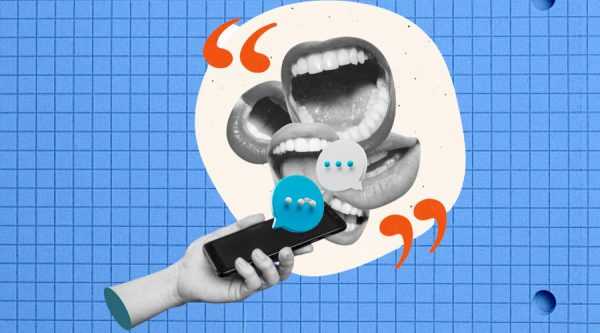Voicebots are finding more uses as time goes on; they are not merely for use with virtual voice assistants
When you hear Voicebot, you probably immediately think of Siri, Alexa, or Ok Google. These are the most practical voice-activated devices that have mostly taken over our daily lives. AI chatbots and voicebots will become more prevalent in 2021 across a range of industries, including insurance, finance, healthcare, fintech, retail, utilities, eCommerce, and many more.
What is a Voice Bot?
Voicebot is a vocal interface that allows people to communicate with computers in regular, everyday language. It is supported by NLP, ASR (automatic speech recognition), machine learning, and TTS as its underlying technologies.
As soon as the user talks, ASR transcribes what they say into text, which NLP then interprets (natural language processing). The relevant response is then created and rendered as speech using TTS.
Voicebots are finding more uses as time goes on; they are not merely for use with virtual voice assistants like Alexa, Siri, or Google Assistants.
For example, some contact centers utilize Voicebots in place of human operators for customer service interactions. In contrast to IVRs, clients can converse verbally rather than by typing.
Benefits
Utilize cutting-edge voicebot technology to communicate with customers.
Intelligent voice control bots now can mimic the subtleties of speech thanks to scientific advancements in NLP. It is necessary to hear this evolution of natural language to understand it. AI is a major influence in communication nowadays. Voice answering machines no longer drive callers to the brink like they once did. There is no need to be concerned about the lengthy language options where we were asked to select from a list of terms before broadcasting them obnoxiously. Today’s circumstances are remarkably different.
Scale-up business processes
People are accustomed to handling two to three discussions at once. Voice bots, on the other hand, have no such restrictions. In response to the volume of calls, businesses may quickly scale up or down their customer service.
Handing off
Voice bots are aware of when they must refer a client to a human. Even though they are incredibly intelligent and sophisticated, voice bots won’t always be able to provide the correct solutions. Though voice bots excel at providing simple, FAQ-based answers, including explaining opening hours and return policies, when a customer’s question grows more complex, they can transfer the call to a human agent to handle it.
Customized connections
Voice-based interactions open up new avenues for creating more superiorly tailored connections. Voice bots, for instance, may instantaneously verify a consumer using voice recognition, and they can adapt their responses based on the user’s past interactions with a company. In light of the conversational nature of the technology, interactive voice bots make customer support more user-friendly. In the end, spoken conversations expose us as more impulsive people than deliberate text-based conversations.
Decreased operational costs
This may be the main advantage of voice bots for businesses. By computerizing simple client interactions that do not require live human intervention, they increase resources and lower contact rates. Additionally, contact center representatives are spared from processing time-consuming tier-1 support inquiries, and can instead concentrate on complex customer issues.
Source: analyticsinsight.net









